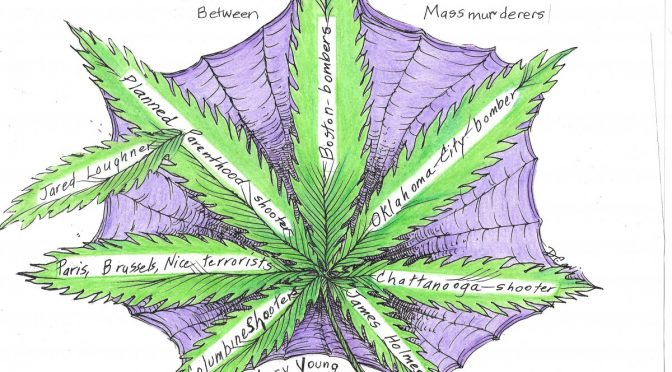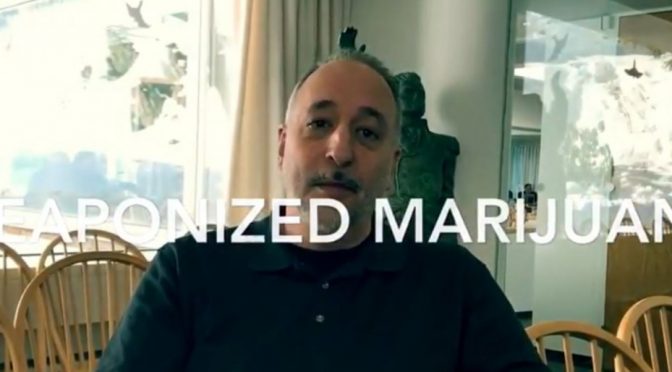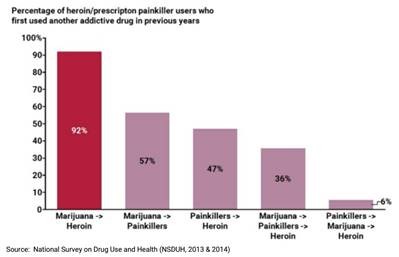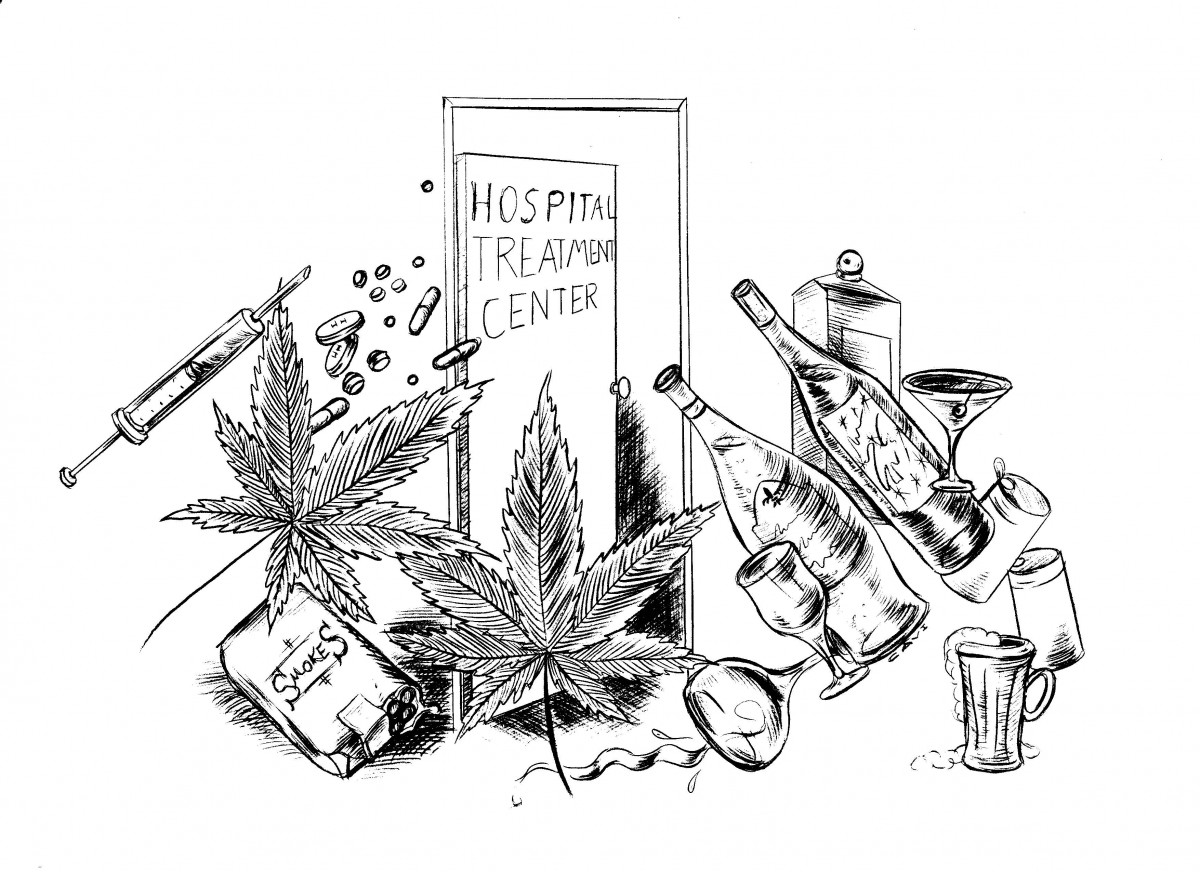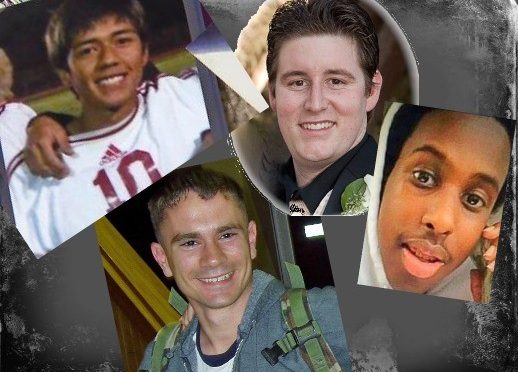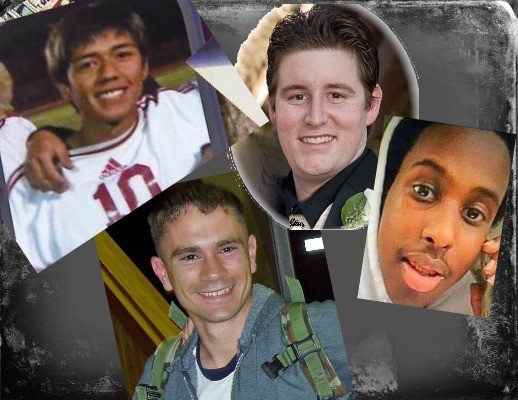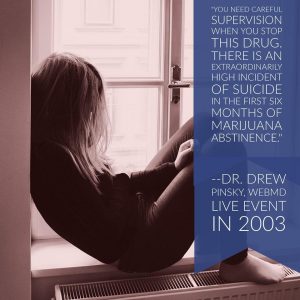
As Senator Chuck Schumer moves to decriminalize marijuana, he should scrutinize why marijuana plays a role in so many mass killings. The toxicology screen of mass killer Devin Patrick Kelley revealed marijuana in his system when he killed 26 people at a Texas church last November. A week after the killings in Texas, California “pot farmer” Kevin Neal murdered five people and injured eleven others. Marijuana, or heavy use of marijuana at a young age, is a common web between many mass killers.

Although Devin Kelley had an anti-church bias, other marijuana-using killers express different ideological bents. Satoshi Uematsu, hated handicapped people whom he considered a burden on society. The Japanese man who stabbed and killed 19 disabled people in 2016 frequently advocated for marijuana legalization. Just weeks before his attack, Uematsu had been diagnosed with cannabis-induced psychosis and paranoia.
In 2013, President Obama’s director of drug policy, Gil Kerlikowske released a study which cited marijuana as the drug most commonly linked to crimes. The links between marijuana and violent behavior transcend national, religious and racial divides. (Read the two most recent cases of religious violence.)

Heavy or very heavy use of marijuana at a young age links several gunmen and terrorists with or without ideologies: Planned Parenthood shooter Robert Dear; Aurora shooter James Holmes; Tucson shooter Jared Loughner, and the Chattanooga shooter Mohammed Abdulazeez.
Marijuana was intricately tied to the Boston bombers, the Oklahoma City bomber and the Bastille Day terrorist in Nice. Brahim and Salah Abdeslam, who planned killing 130 at a Paris night club, and Cherif Kouachi, of the Charlie Hebdo killings, also belonged to the complicated web of heavy, chronic marijuana users. The perpetrators of bombings in London and Manchester were known to be heavy marijuana users.
When Marijuana Use Leads to Acute or Chronic Psychosis

While around 50% of American adults have tried marijuana, only 10-13 % of adults smoke pot on any regular basis. Pot-using mass killers often stand out because of the chronic and obsessive nature of their marijuana habit. Planned Parenthood shooter Robert Dear appears to have moved from North Carolina to Colorado, fixated on his desire to be high.
A significant chunk of marijuana users experience psychotic symptoms. Psychotic killers with mental illness may appear different from political and religious killers, but they often share the trait of persistent, early marijuana use.

Noah Harpham, who shot three people in Colorado Springs weeks before the Planned Parenthood shootings, experienced early pot addiction and tried to recover. When he used marijuana again after Colorado legalized it, he immediately went into psychosis. Shortly before the shooting rampage, he had been trying to get mental health treatment. His toxicology report tested THC+, and no other drugs were found.
Aurora, Colorado theater shooter, James Holmes, was a heavy marijuana user. A neighbor reported regularly seeing him smoking weed behind his apartment, but never talked to him.
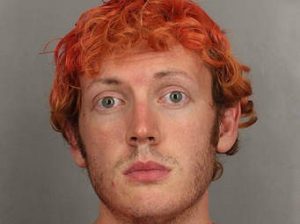
The Chattanooga shooter suffered mainly from depression and/or bipolar disorder, and may not have been driven as much by ideology as the other mass shooters. Heavy marijuana use was an essential part of his life, and it had prevented him from getting a job.
The Teen Brain
The Boston bombers, Tamerlan and Dzhokhar Tsarnaev, had been heavy, persistent teenage marijuana users. A study from the University of Pittsburgh shows strong changes may affect the adolescent user years later, even after stopping the use of marijuana.

The Nice terrorist, Mohammed Bouhlel, plowed into the crowd with a truck on Bastille Day two years ago, killing 86 people. Bouhlel had a history of smoking strong cannabis as a teen. He had an early psychotic break at age 19, a few years before the move to France. His psychosis predated his interest in jihad, which had begun only a few months before the Bastille Day attack. Bouhlel also took steroids and pharmaceutical drugs years later, but started his drug use with weed.
In 2014, Washington State high school student Jaylen Fryberg shot five friends whom he had invited to eat lunch with him. On Twitter he revealed the need to smoke a ton of pot because of a breakup. The girl who had broken up with him said on Twitter that smoking pot made him stupid. He was only 15 at the time, but Washington State started selling commercialized pot about four months earlier.
Marijuana strongly alters the teen brain, and a recent study from Montreal pinpointed that any user under age 25 can become of victim of psychotic symptoms.

Another pair of high school shooters, the Columbine shooters, chose to do their rampage on 4/20, a symbolic date for junkies. Timothy McVeigh also chose this day for the Oklahoma City bombing.
When Marijuana Psychosis Leads to Violence: Aurora, Arizona
Some the most notorious recent murderers who were marijuana users fell victim to psychosis and delusion: Aurora shooter Holmes, Tucson shooter Loughner, Planned Parenthood shooter Robert Dear and Eddie Routh. Routh shot “American Sniper” Chris Kyle and Chad Littlefield because of his paranoia. He smoked marijuana the day of the murders. Suffering from PTSD, he thought the other men would hurt him.

Marijuana often creates a cat-and-mouse chase with depression, bipolar, anxiety disorders and schizophrenia, and it makes these conditions worse. 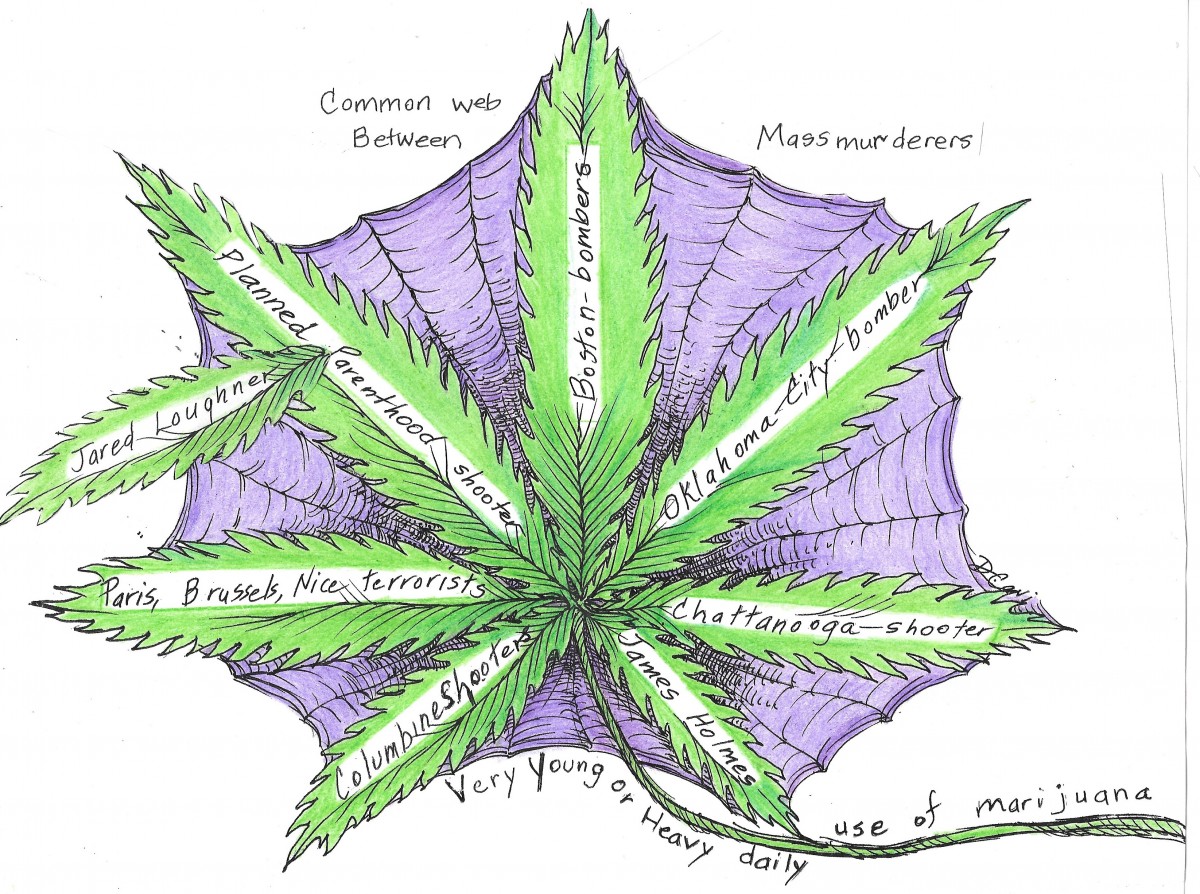
Solution to Cutting Down Mass Violence
Americans argue over the most effective means to stop mass killers.

We acknowledge that not everyone who uses marijuana becomes mentally ill or psychotic. However, cannabis use, especially in young users can cause extraordinary changes to the brain. Read how Salman Abedi changed from a cannabis smoking teen to an Isis terrorist.
*Fazel S, Långström N, Hjern A, Grann M, Lichtenstein P. Schizophrenia, substance abuse, and violent crime. JAMA. 2009 May 20;301(19):2016-23.
Miller, Norman S Miller and Thersilla Oberbarnscheidt. Marijuana Violence and Law. Journal of Addiction Research & Therapy, January 17, 2017
Harris AW, Large MM, Redoblado-Hodge A, Nielssen O, Anderson J, Brennan J. Clinical and cognitive associations with aggression in the first episode of psychosis. Aust N Z J Psychiatry. 2010 Jan;44(1):85-93..…… ↩

